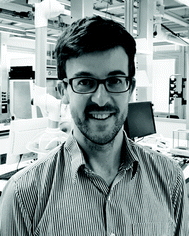Introduction to liquid composites
Michael D.
Bartlett
 *a and
Robert W.
Style
*a and
Robert W.
Style
 *b
*b
aMaterials Science and Engineering, Iowa State University of Science and Technology, Ames, IA 50011, USA. E-mail: mbartlet@iastate.edu
bDepartment of Materials, ETH Zürich, Zürich, Switzerland. E-mail: robert.style@mat.ethz.ch
Composites combine different components to create materials with properties and performance greater than the sum of their parts. In soft materials, composites are often created to take advantage of the high compliance and extensibility of the soft matrix phase, while the secondary phase is added to enhance functionality, mechanical properties, or compatibility. However, the secondary phase is often solid, typically a rigid inclusion, and a significant compliance mismatch between the soft matrix and rigid inclusion can be problematic. For example, a rigid filler can cause unwanted increases in stiffness, reduction in extensibility and conformability, and challenges in fabrication with agglomeration and poor wetting. Recently, applications ranging from soft robotics and soft electronics to active matter and biological mimics have moved towards replacing the rigid inclusion or component with a liquid one, building all-soft matter systems that have the potential to unlock new properties, morphologies, and opportunities in soft material systems. This development is accompanied by new questions and challenges regarding the physics, mechanics, fabrication methodologies, and integration approaches that need to be considered to enable liquid composites. Thus, with this theme collection (which includes all the papers referenced by DOI below) we aim to bring together research on liquid composites to highlight recent advances and lay the foundation for future work on this emerging materials paradigm.
Although the concept of making composites with liquids has deep roots (emulsions and foams, for example), recent work has highlighted the untapped potential of soft-solid/liquid composites for achieving excellent, novel material properties and functions. This is particularly true in fields such as soft robotics, active matter, and flexible electronics (DOI: 10.1039/C9SM02502B; DOI: 10.1039/D0SM00279H). In these, homogeneous soft materials typically cannot be used, as they are fairly inert and lack electrical or thermal conductivity. Adding a functional liquid component, such as liquid metal (DOI: 10.1039/D0SM00503G; DOI: 10.1039/D0SM00278J), ferrofluid (DOI: 10.1039/D0SM00410C; DOI: 10.1039/D0SM00626B), or a pressure-controlled fluid,1 brings functionality, while not compromising mechanical properties (DOI: 10.1039/D0SM00383B).2 Sometimes the combination even has surprising outcomes. For example, liquid inclusions can actually stiffen composites,3–6 impart extreme toughness,7 generate structural colour,8 and create autonomously self-healing circuitry.9
However the usefulness and relevance of liquid composites goes far beyond soft robotics and electronics. For example, self-healing materials can be manufactured with liquid-containing pockets that initiate chemical reactions when broken.10 Oil-soluble drugs11 or even beneficial bacteria (DOI: 10.1039/C9SM02387A) can be contained in oil droplets that are encapsulated in stable hydrogels. Bijels (bicontinuous jammed emulsion gels), which consist of two phases with extremely large interfacial contact areas, have a wealth of potential applications ranging from catalysis to energy storage (DOI: 10.1039/D0SM00071J; DOI: 10.1039/C9SM02187F). In ice physics, stable microscopic pockets of undercooled water in frozen materials play a huge role in controlling how freezing damage arises (DOI: 10.1039/D0SM00558D).12 In all of these cases, alongside material development, a whole host of fundamental physics and mechanics questions further arise as we try to understand and predict how such composites behave (DOI: 10.1039/D0SM00296H).13
Nature also provides a wealth of inspiration. The incredible stretchability of spider webs, derived from large coiled-up reservoirs of material inside liquid droplets on the webs, has been reproduced with synthetic materials, and used to make highly stretchable electronics.14,15 The extremely slippery surface of the pitcher plant has inspired lubricant-infused surfaces for extreme wettability control.16–18 Multiple reversible animal adhesion strategies – including those of tree frogs (DOI: 10.1039/D0SM00105H), insects and spiders19 – utilize liquid components coupled with elastic solids, and represent a strategy to control adhesion. Cellular biological tissue has many desirable properties, including flexibility, toughness, and selective permeability, which can be mimicked via emulsion templating strategies (DOI: 10.1039/C9SM01732A). Even inside cells, microscopic droplets of phase-separated protein form, embedded in the cytoskeleton, which play a key role in compartmentalising the cell and regulating biochemical reactions (DOI: 10.1039/D0SM00628A; DOI: 10.1039/D0SM00182A).20
We are delighted to present this themed collection that focuses on exciting advances involving soft materials with a liquid component. The comprehensive research presented in the collection highlights the huge breadth of topics that combine under this umbrella and the interdisciplinary nature of the field, providing diverse opportunities for scientists and engineers to contribute and advance current understanding. This ranges from the design and manufacture of innovative materials with novel properties, to soft engineering applications, to fundamental studies on new mechanics and physical phenomena that arise when combining liquids and solids. We hope that the collection will help inspire the next set of breakthroughs, and build an even brighter future for liquid composites.
References
- R. F. Shepherd, F. Ilievski, W. Choi, S. A. Morin, A. A. Stokes, A. D. Mazzeo, X. Chen, M. Wang and G. M. Whitesides, Proc. Natl. Acad. Sci. U. S. A., 2011, 108, 20400–20403 CrossRef CAS PubMed.
- A. T. Haque, R. Tutika, R. L. Byrum and M. D. Bartlett, Adv. Funct. Mater., 2020, 2000832 CrossRef CAS.
- R. W. Style, R. Boltyanskiy, B. Allen, K. E. Jensen, H. P. Foote, J. S. Wettlaufer and E. R. Dufresne, Nat. Phys., 2015, 11, 82 Search PubMed.
- B. S. Chang, R. Tutika, J. Cutinho, S. Oyola-Reynoso, J. Chen, M. D. Bartlett and M. M. Thuo, Mater. Horiz., 2018, 5, 416–422 RSC.
- R. W. Style, A. Jagota, C.-Y. Hui and E. R. Dufresne, Annu. Rev. Condens. Matter Phys., 2017, 8, 99–118 CrossRef CAS.
- P. Testa, R. W. Style, J. Cui, C. Donnelly, E. Borisova, P. M. Derlet, E. R. Dufresne and L. J. Heyderman, Adv. Mater., 2019, 31, 1900561 CrossRef PubMed.
- N. Kazem, M. D. Bartlett and C. Majidi, Adv. Mater., 2018, 30, 1706594 CrossRef PubMed.
- R. W. Style, T. Sai, N. Fanelli, M. Ijavi, K. Smith-Mannschott, Q. Xu, L. A. Wilen and E. R. Dufresne, Phys. Rev. X, 2018, 8, 011028 CAS.
- E. J. Markvicka, M. D. Bartlett, X. Huang and C. Majidi, Nat. Mater., 2018, 17, 618–624 CrossRef CAS PubMed.
- M. D. Hager, Handbook of Solid State Chemistry, 2017, pp. 201–225 Search PubMed.
- J. Wang, Y. Li, Y. Gao, Z. Xie, M. Zhou, Y. He, H. Wu, W. Zhou, X. Dong and Z. Yang, et al. , Ind. Crops Prod., 2018, 112, 281–289 CrossRef CAS.
- J. Dash, H. Fu and J. S. Wettlaufer, Rep. Prog. Phys., 1995, 58, 115 CrossRef CAS.
- H. Wu, N. Moyle, A. Jagota and C.-Y. Hui, Soft Matter, 2020, 16, 2760–2773 RSC.
- H. Elettro, S. Neukirch, F. Vollrath and A. Antkowiak, Proc. Natl. Acad. Sci. U. S. A., 2016, 113, 6143–6147 CrossRef CAS PubMed.
- P. Grandgeorge, N. Krins, A. Hourlier-Fargette, C. Laberty-Robert, S. Neukirch and A. Antkowiak, Science, 2018, 360, 296–299 CrossRef CAS PubMed.
- H. F. Bohn and W. Federle, Proc. Natl. Acad. Sci. U. S. A., 2004, 101, 14138–14143 CrossRef CAS PubMed.
- A. Lafuma and D. Quéré, Europhys. Lett., 2011, 96, 56001 CrossRef.
- T.-S. Wong, S. H. Kang, S. K. Tang, E. J. Smythe, B. D. Hatton, A. Grinthal and J. Aizenberg, Nature, 2011, 477, 443–447 CrossRef CAS PubMed.
- D. Labonte and W. Federle, Soft Matter, 2015, 11, 8661–8673 RSC.
- Y. Shin and C. P. Brangwynne, Science, 2017, 357, eaaf4382 CrossRef PubMed.
| This journal is © The Royal Society of Chemistry 2020 |


